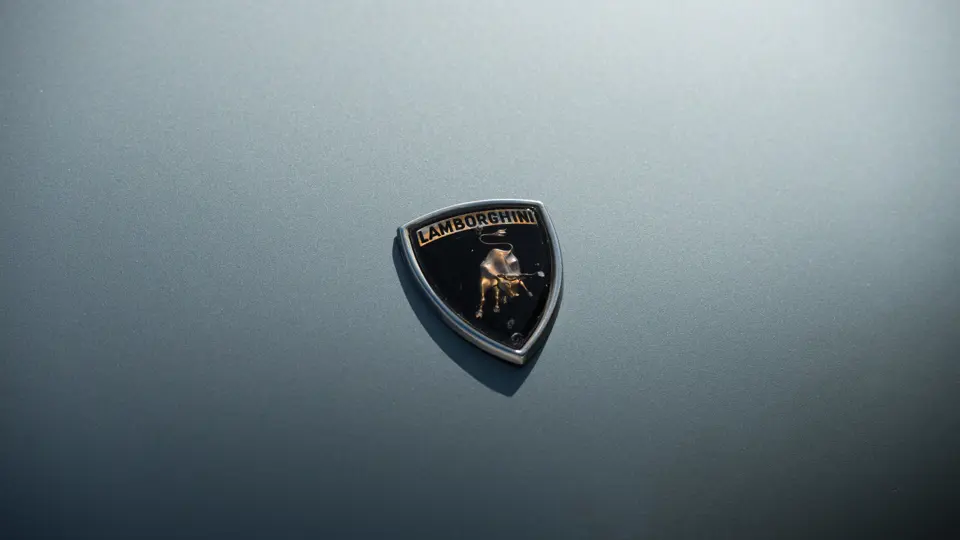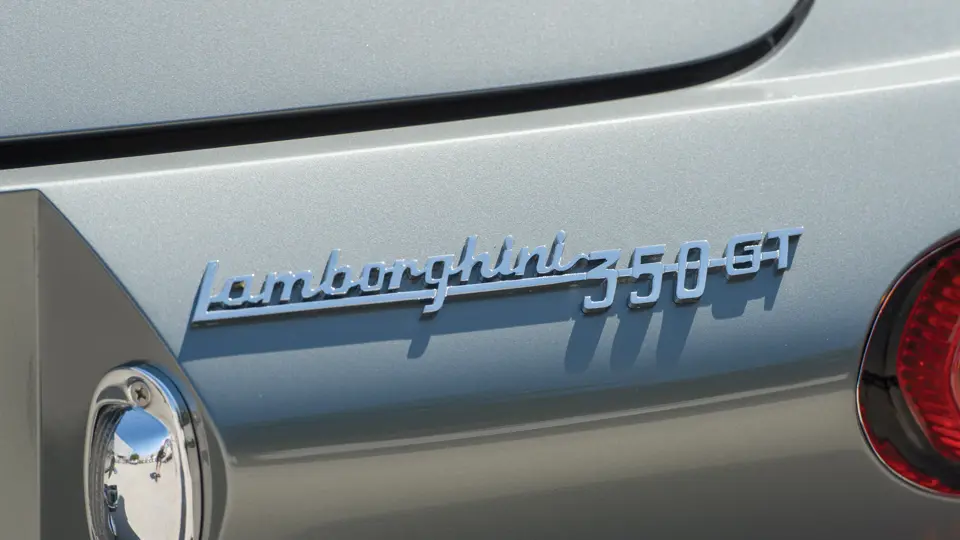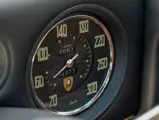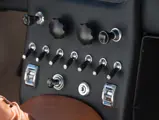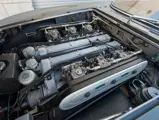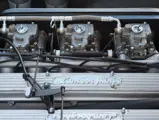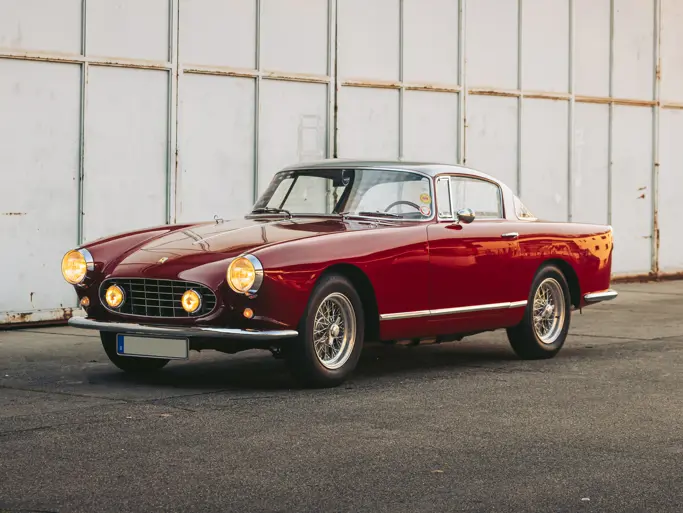
1965 Lamborghini 350 GT by Touring
{{lr.item.text}}
$935,000 USD | Sold
{{bidding.lot.reserveStatusFormatted}}
- One of 131 examples built
- Matching-numbers engine; upgraded by the factory to 400 GT specifications
- Thorough two-year restoration by marque specialist Gary Bobileff, which was completed in 2015
- Fascinating period documentation, including factory build sheets
- Foundation of the Lamborghini supercar tradition
280 bhp, 3,464 cc DOHC 60-degree V-12 engine with six Weber 40 DCOE-2 sidedraft carburetors, five-speed manual transmission, independent front and rear suspension with A-arms, coil springs, tubular shock absorbers, and anti-roll bars, and four-wheel hydraulic disc brakes. Wheelbase: 100.5 in.
Ferruccio Lamborghini’s first sports car was based on a chassis design by the young Gian Paolo Dallara, who had apprenticed under Carlo Chiti at Ferrari before moving on to Maserati under the direction of Giulio Alfieri. This impressive résumé brought tremendous technical expertise and imagination to the innovative designer’s capabilities, and the first Lamborghini’s chassis appropriately featured a race car-like frame of steel tubing. Specifications were inspired by racing machines and included independent front and rear suspension and four-wheel disc brakes.
The new car was clothed in a body penned by Franco Scaglione and debuted at the Turin Motor Show in 1965. Just two examples of this 350 GTV prototype were produced before Lamborghini realized a few tweaks would be required for sales success. The V-12 was slightly detuned, and the top-feeding racing carburetors were relocated in favor of sidedraft Webers, which significantly lowered the hood profile. Touring of Milan was commissioned to create new aluminum coachwork, and the company built a masterpiece of Italian GT design in their Superleggera construction technique, with a long front hood and short rear deck meeting in a small fastback cockpit that was swathed in the finest interior amenities.
Introduced at the 1964 Geneva Salon, the 350 GT was both aesthetically arresting and mechanically powerful, capable of a top speed of 165 mph. The high degree of luxury and finishing immediately prompted customer interest, and Lamborghini began selling cars to some of Italy’s most well-heeled motoring sportsmen. Just 131 examples of the 350 GT were built at the new Lamborghini factory in Sant’Agata over the next three years, before the model was phased out in favor of the mildly redesigned 400 GT. Several of the later 350 GT examples were upgraded to 4-liter specifications early in their lives, giving them a deceptive amount of power and slightly blurring the delineation between the two models.
CHASSIS NUMBER 0220
Chassis number 0220 was one of approximately sixty-seven examples built in 1965, and it was originally finished by the factory in Grigio Saint-Vincent with a Tobacco-colored leather interior. As indicated by an original factory chassis card, on July 7, 1965, the car was sold new to the Marquis Alessandro Cisa Asinari di Grésy, of Galliate, Novara, the heir to a line of nobility that owns some of Piedmont’s most noted vineyards. Mr. di Grésy was an ardent automotive enthusiast. Documentation suggests he purchased the 350 GT from the well-known LAMBOCAR dealership in Milan.
A May 1966 letter to the Marquis from Gian Paolo Dallara himself discusses the topic of upgrading the Lamborghini’s 3.5-liter motor to the new 4-liter displacement, and it is believed the modification to its original engine was undertaken sometime later that year. A 1979 letter from Allesandro Artese of Lamborghini to the then owner states that the car is a genuine 350 GT, according to company records, which clarifies that it was upgraded very early in its life.
In 1974, this handsome 350 GT was purchased by Jim Kaminski, one of the area’s most fervent marque enthusiasts and the founder of the Lamborghini Owners Club. Chassis number 0220 experienced ideal care while in his ownership, and by 1979, he began to explore the car’s provenance with letters to the di Grésy family and the Lamborghini factory. The car is believed to have spent the most of the next 30 years in Florida while under Mr. Kaminski’s care.
By 2013, the aging 350 GT was owned by Mario Velardo, of Ossining, New York, a well-known Lamborghini enthusiast and occasional Italian car show judge. Mr. Velardo commissioned a full engine rebuild by Auto Elite, of Tenafly, New Jersey, specialists in premium Italian sports cars.
More recently acquired by the consignor, this 350 GT had been the subject of a comprehensive restoration by one of the nation’s foremost Lamborghini experts, Gary Bobileff of San Diego. Mr. Bobileff fully refreshed all mechanical systems and completely restored the original coachwork, including performing a bare-metal repaint in the correct factory-original color scheme of Grigio Saint-Vincent. Executed to the typical high standards of a Bobileff restoration, the two-year nut-and-bolt refurbishment was just recently completed, resulting in breathtaking quality. The entire process was also photographed and documented, adding further detail to the car’s fascinating history file.
This 350 GT is an immaculate statement in Italian GT motoring and is now inviting future ownership to bask in its Bizzarrini-designed V-12 glory. It is accompanied by a 400 GT manual, jack with bag, and a deep file of documentation, including period correspondence, a letter to the original owner from Gian Paolo Dallara, a Touring body number log page, and a factory checklist.
Chassis number 0220, featuring its original matching-numbers engine and coachwork, is a rare and exquisitely restored example of the elegant grand touring cars that reshaped the landscape of premium Italian automobile manufacture. It should be welcomed at top-tier vintage Italian car events, such as Concorso Italiano and La Belle Macchine, and offers its next caretaker the considerable performance of the period-upgraded 4-liter V-12.




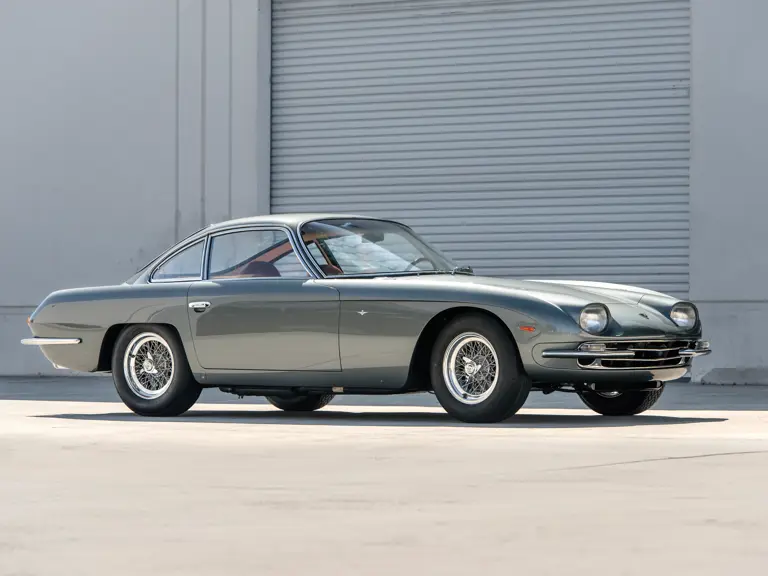


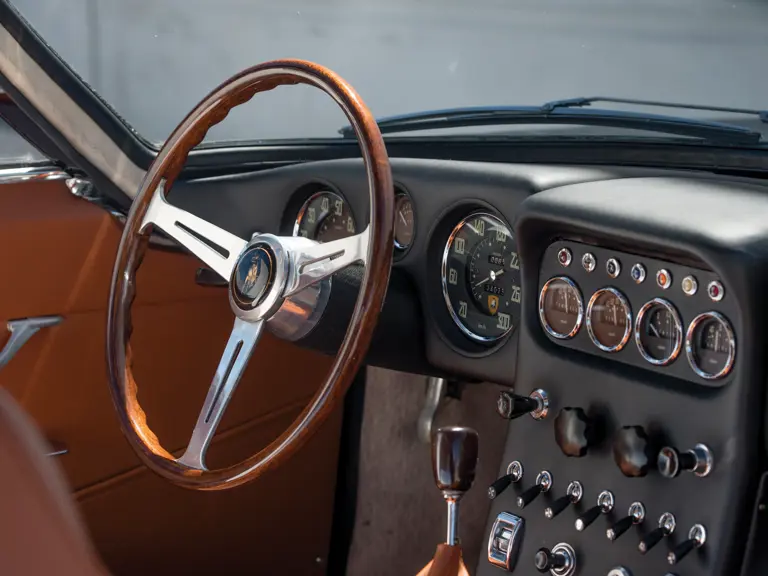
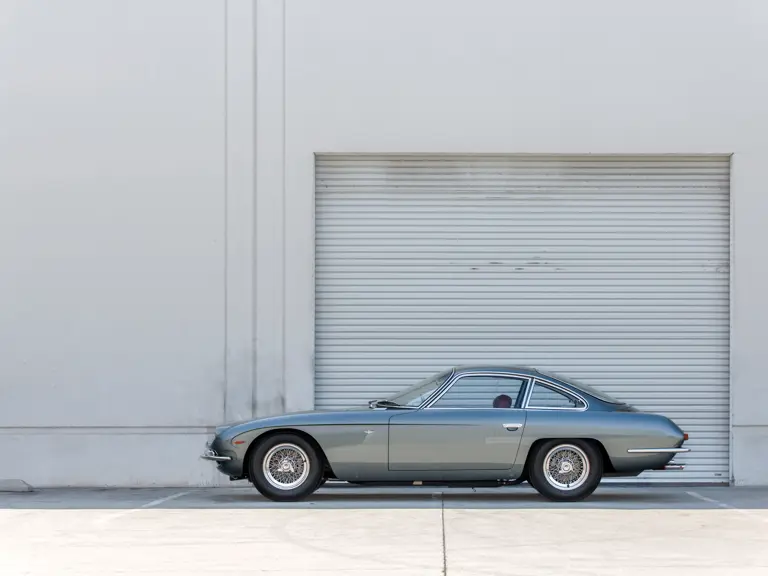
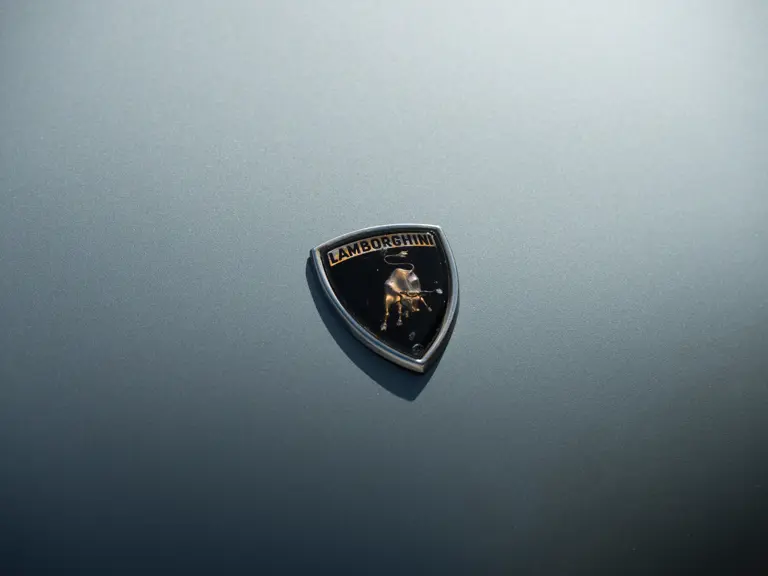
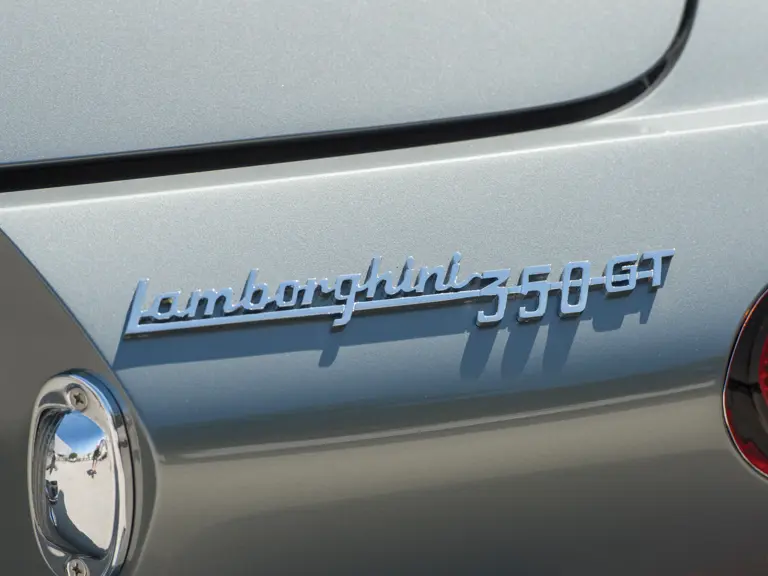

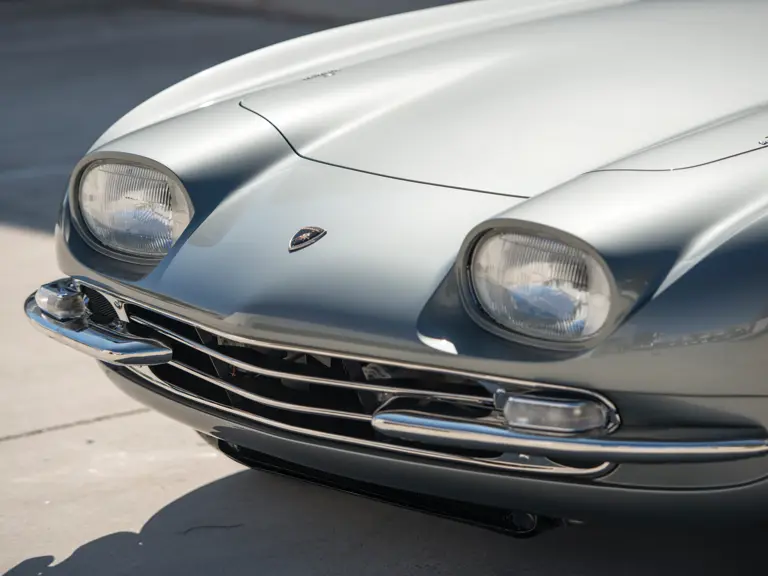


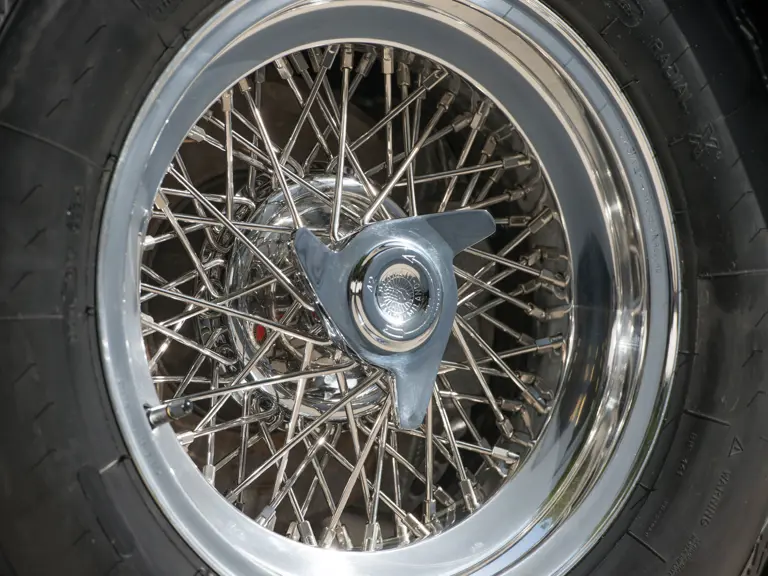
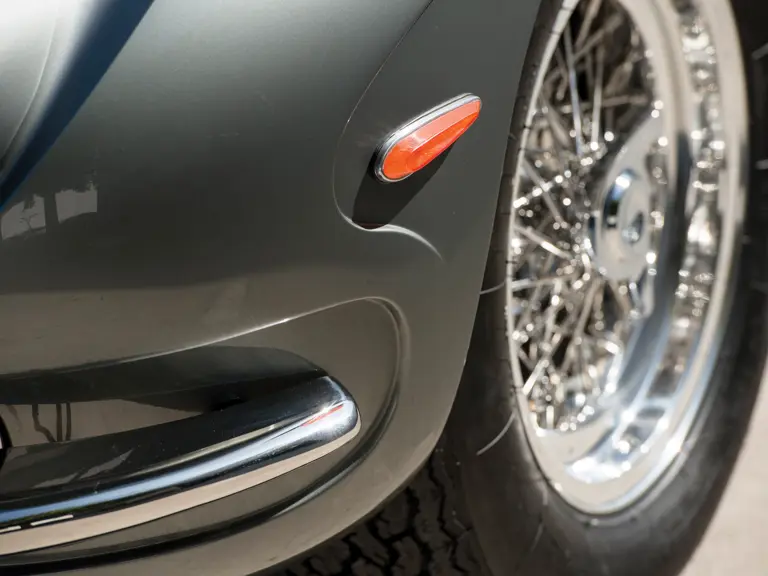
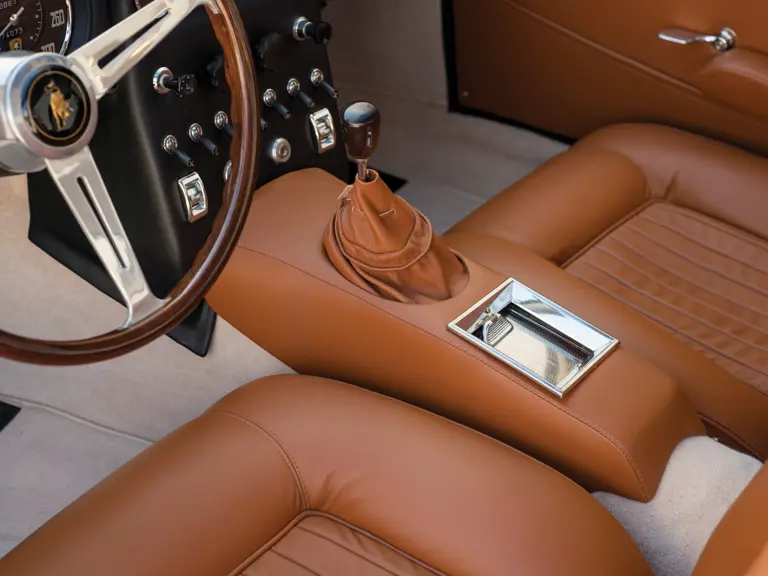
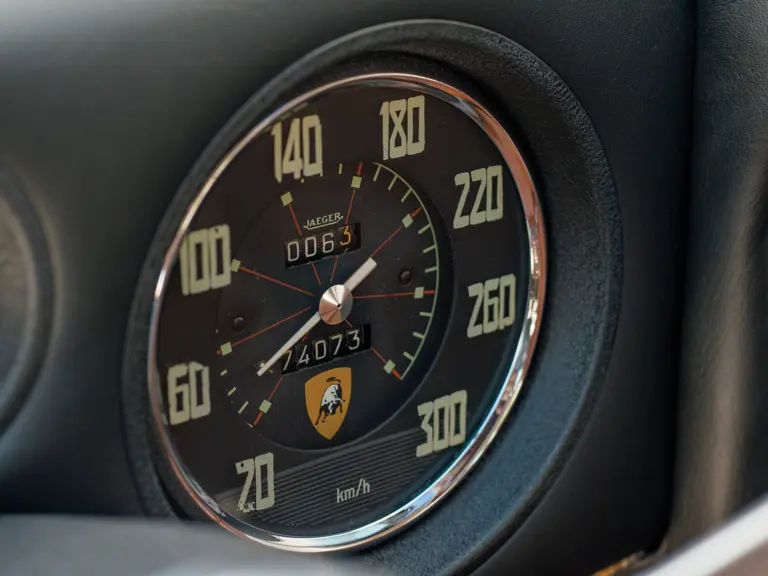
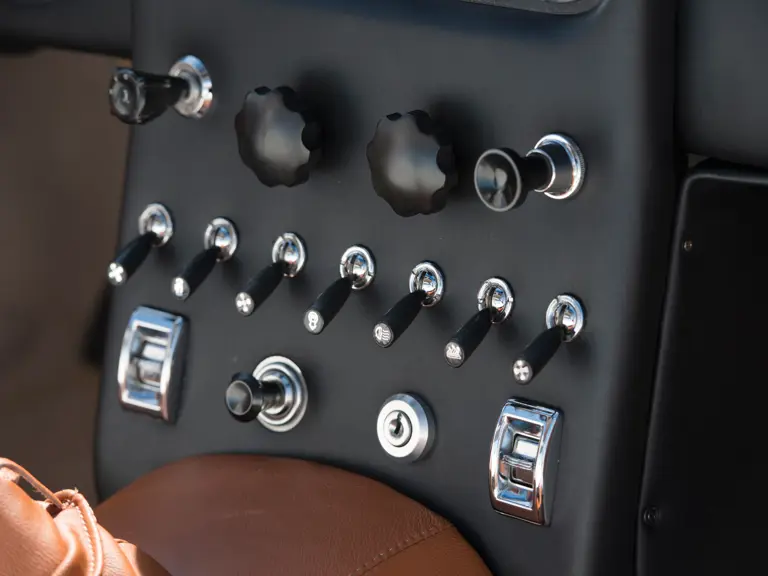
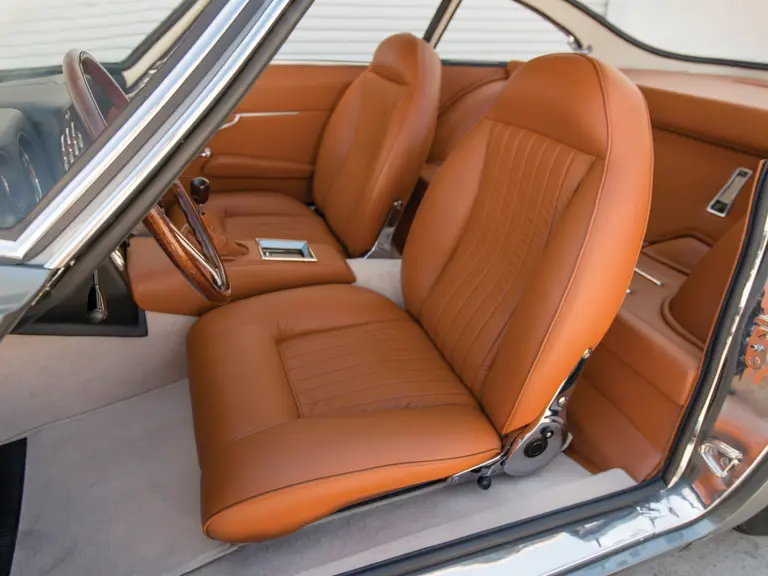

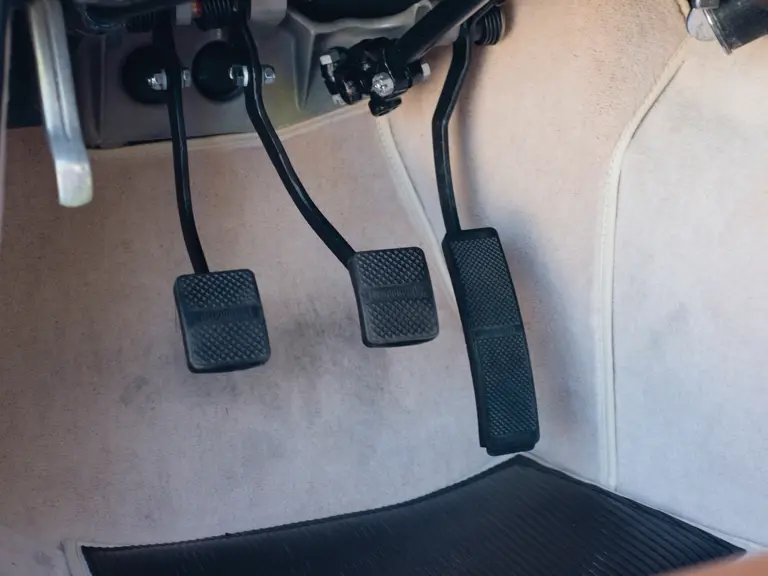


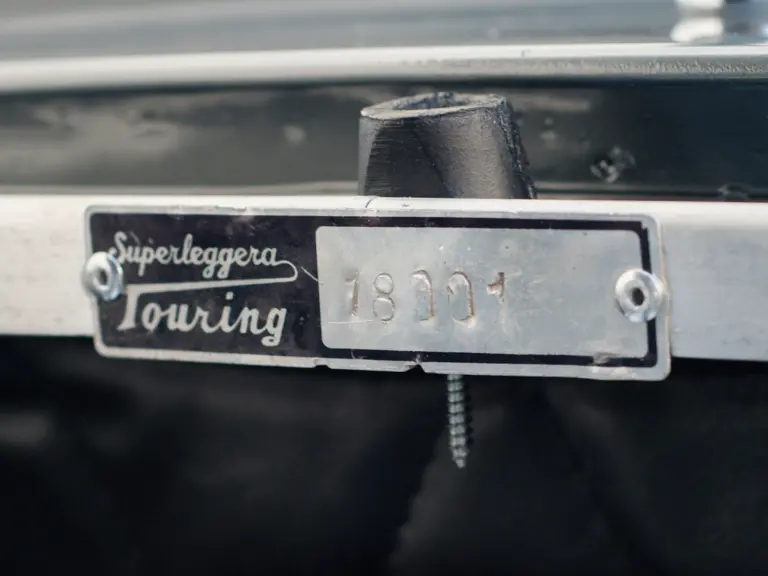
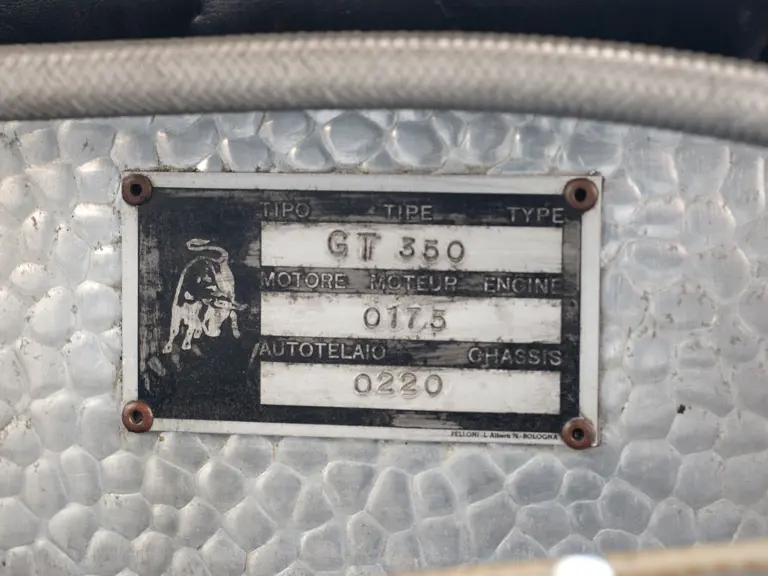
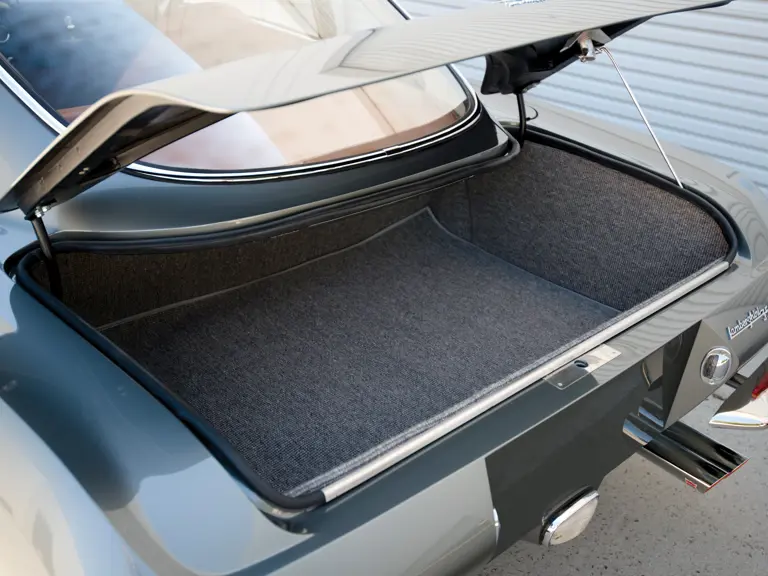




 | Monterey, California
| Monterey, California

